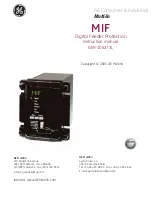
Section 4: Seeding Adjustments
4/03/08
PSN2096 Primary Seeders 313-306M
Land Pride
19
Seeding Adjustments
Standard Seed Box Option
Small Seeds Box Option
1.
Using the seed rate charts, beginning on page 20,
determine the seeding rate for the seed you will be
planting and make the following adjustments.
a.
Decide whether you need the slow or fast drive
type. Change the speed change sprocket if
necessary, to the desired drive type, see
Figure 3-2 & Figure 3-3 on page 18.
b.
Locate the seed rate adjustment handle at the
rear of the seeder and move it to the indicator
number obtained from the charts, see Figure 3-4.
For best results, first move adjustment handle all
the way to the left. Then move the handle to the
desired setting, moving from a lower to a higher
number.
2.
There are many factors which will affect seeding
rates: seed treatment, weight of seed, surface
condition of seed or roller slippage. Minor adjustments
may be needed to compensate for these factors.
3.
The seed rate charts are based on average size seed.
This may differ from the seed you are using. Use the
seed rate charts as a guide. For lighter than average
seed, the setting should be increased. For heavier
than average seed, the setting should be decreased.
4.
Complete the following procedure to calibrate the rate
for your specific seed.
a.
Place several pounds of seed over three of the
seed cups at the outboard end of the seeder.
b.
Raise the seeder off the ground and support
safely, leaving front roller to rotate freely.
Rotate the front roller to see that the drive system
is working properly and the seed cups are free
from foreign matter.
c.
Place a drop cloth under the seeder to gather the
seed as it is metered.
d.
Rotate the front roller 38 rotations to get 1000
square feet or 1,640 rotations to get one acre. Be
sure to check the three seed cups to make sure
each cup has plenty of seed coming into it.
e.
Weigh the seed which has been metered. Divide
by three. This will give you the ounces/pounds
metered by each seed cup. Convert to pounds
and multiply by the number of cups on your
seeder to arrive at the total pounds per 1000
square feet your seeder would meter at that
setting. If this figure is different than desired, set
your seed cup adjustment lever accordingly.
5.
You may want to repeat the calibration procedure if
the results of your calibration vary greatly from the
suggested settings on the chart.
NOTE: A 1/2” bolt is threaded into the right hand end
of the front roller shaft. Turn the bolt clockwise for
proper seed cup rotation.
REMEMBER: Field conditions will affect seeding rates.
When seeding, check the amount of seed you are using
by noting acres or square feet seeded, amount of seed
added to seeder, and level of seed in the seed box. If you
suspect that you are seeding more or less seed than
desired, and you have accurately calibrated the seeder to
your seed, you may need to adjust the seeding rate
slightly to compensate for field conditions.
Standard Seeds Rate Adjustment Handle
Figure 3-4
Small Seeds Rate Adjustment Handle
Figure 3-3
NOTE: To determine seed rates for seeds not listed
on the charts, compare weight and size to those listed
and use a similar setting. Follow steps 4 and 5 to
calibrate the seed rate.
NOTE: This Standard Seed Option is equipped with
a four-position door on each seed cup. The highest
handle position is for small seeds, the second and
third positions are for larger seeds. For application
with this seeder, you will only need to use the highest
position. MAKE SURE all handles are in the same
position before seeding. The wide open position will
allow complete clean out of the seed cup.
IMPORTANT: DO NOT open the cup to the wide open
position with seed in the box unless complete clean out
is desired.
20592
20591
































